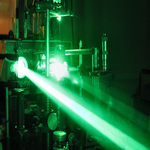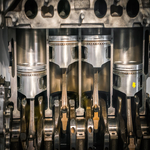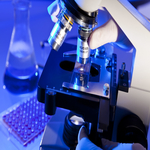Seventh Grade Science
Here is a list of the main scientific concepts students learn in seventh grade! These science concepts are organized into categories. To start, just click on any link. You can do these in any order at any pace that's right for you.
Chapters 1 & 2: Physics of Light
___________________________
Chapter 1
Properties of Light
Chapter 1-1
Topic Intro & Explanation Watch the FIRST video explanation on this page ("Light Properties: Part 1")
Chapter 1-2
Activities & Experiments Choose at least two of the activities below.
Chapter 1-3
Activities & Experiments Choose at least two of the activities below.
- Microwaving Soap
- Fun with UV
- Dark & Light of Polarization
- Black Light Treasure Hunt
- How to See Infrared Light
- Eyeballoon
___________________________
Chapter 2
Properties of Light & Lasers
Chapter 2-1
Topic Intro & Explanation Watch the SECOND video explanation on this page ("Lasers: Part 1")
Chapter 2-2
Activities & Experiments Choose at least two of the activities below.
Chapter 2-3
Topic Intro & Explanation Watch the THIRD video explanation on this page ("Lasers: Part 2")
Chapter 2-4
Activities & Experiments Choose at least two of the activities below.
Chapter 2-5
Topic Intro & Explanation Watch the FOURTH video explanation on this page ("Light Properties: Part 2")
Chapter 2-6
Activities & Experiments Choose at least one of the activities below.
- Reflection using a Laser
- Spectrometer
- Laser Light Show
(for advanced students)
Chapter 2-7
Activities & Experiments Choose at least one of the activities below.
- Speed of Light using Chocolate
- Crystal Radio
(for advanced students)
Chapter 2-8 - BONUS LABS
Activities & Experiments Choose one of the activities below - these are all optional!
- Laser Microscope
- Light, Lasers and Optics
- Build a Telescope
(for advanced students)
Chapters 1 & 2 Learning Evaluation
Complete the Learning Evaluation below. Learning evaluation
___________________________
 |
Physics of Light & LasersDiscover refraction, reflection, beam scattering, optical density, transmission, and absorption as you investigate the electromagnetic spectrum using lenses, mirrors and filters to build an electric eye, optical cameras, reflector telescopes, compound microscopes, laser shows and so much more! |
Chapters 3, 4 & 5: Physics - Energy & Motion
___________________________
Chapter 3
Physics of Motion
Chapter 3-1
Topic Intro & Explanation Watch the FIRST video explanation on this page ("Physics: Mechanics")
Chapter 3-2
Activities & Experiments Choose at least two of the activities below.
- Detecting the Gravitational Field
- Detecting the Magnetic Field
- Detecting the Electric Field
- Force-full Cereal
- Forever Falling
Chapter 3-3
Topic Intro & Explanation Watch the SECOND video explanation on this page ("Physics: Motion")
Chapter 3-4
Activities & Experiments Choose at least two of the activities below.
___________________________
Chapter 4
Physics - Energy
Chapter 4-1
Topic Intro & Explanation Watch the THIRD video explanation on this page ("Physics: Energy")
Chapter 4-2
Activities & Experiments Choose at least two of the activities below.
Chapter 4-3
Topic Intro & Explanation Watch the FOURTH video explanation on this page ("Physics")
Chapter 4-4
Activities & Experiments Choose at least one of the activities below.
Chapter 4-5
Topic Intro & Explanation Watch the FIFTH video explanation on this page ("Physics: Work & Power")
Chapter 4-6
Activities & Experiments Choose at least three of the activities below.
- Inclined Plane
- Levers
- Roller Skate Belts
- Seesaw
- What’s a Joule?
- Measuring Power
- Homemade Pulleys
- Return-Mechanism Pulleys
- Block & Tackle
- Simple Pulleys
Chapter 4-7
Topic Intro & Explanation Watch the SIXTH video explanation on this page ("Physics: Work, Energy & Power") and do the Mechanical Challenge mentioned in class.
Bonus Lab:
Hydraulic Pneumatic Earth Mover
Chapter 5
Physics - Thermal Energy
Chapter 5-1
Topic Intro & Explanation Watch the SEVENTH video (last one!) explanation on this page ("Thermodynamics")
Chapter 5-2
Activities & Experiments Choose at least two of the activities below.
- Sensing Temperature
- Balloon Gymnastics
- Ghost Coin
- Food Dye Currents
- Making Clouds
- Boiling Room Temperature Water
- Stairstep Candles
- Football Ice Cream
- Convection Currents
Chapter 5-3
Activities & Experiments Choose at least two of the activities below.
- Soaking Up Rays
- Fire Water Balloon
- Solar Drinking Bird
- Hero Engine
- Peanut Energy
- Bonus Lab: Stirling Engine
Chapters 3, 4, & 5 Learning Evaluation
Complete the Learning Evaluation below. Learning evaluation
___________________________
 |
Energy All the different forms of energy (like heat, electrical, nuclear, sound, etc.) can be broken down into just two categories: potential and kinetic energy. You'll construct a working steam boat, design and build an external combustion engine from soda cans, make a fire water balloon, use a gum wrapper as a bi-metallic thermostat, launch projectiles, race coasters, calculate the energy inside of a peanut, and more. |
Chapters 6, 7 & 8: Life Science - Cells, Microscopes & Human Anatomy
___________________________
Chapter 6
Life Science: Cells
Chapter 6-1
Topic Intro & Explanation Watch the FIRST video explanation on this page ("Cells Part 1")
Chapter 6-2
Activities & Experiments Choose one or both of the activities below.
Chapter 6-3
Topic Intro & Explanation Watch the SECOND video explanation on this page ("Cells Part 2)
Download the worksheet that goes with Cells Part 2 here.
Chapter 6-4
Activities & Experiments After watching Cells Part 2 please do the following experiment:
Chapter 6-5
Topic Intro & Explanation Watch the THIRD video explanation on this page ("Cells Part 3")
Chapter 6-6
Activities & Experiments Choose one or both of the activities below.
___________________________
Chapter 7
Life Science: Microscopy
Chapter 7-1
Topic Intro & Explanation Watch the FOURTH video explanation on this page ("Microscopes Part 1")
Chapter 7-2
Activities & Experiments Choose at least two of the activities below.
- Microscope Introduction
- Anatomy of a Microscope
- How to Use a Microscope
- Dry Mount Preparation
- Wet Mount Preparation
Chapter 7-3
Topic Intro & Explanation Watch the FIFTH video explanation on this page ("Microscopes Part 2")
Chapter 7-4
Activities & Experiments Choose at least one of the activities below.
Chapter 7-5
Topic Intro & Explanation Watch the SIXTH video explanation on this page ("Biology with Oliver: Cells & Microscopy")
Chapter 7-6
Activities & Experiments Choose at least three of the activities below.
- Slide Preparation (Staining)
- Heat Fixes
- Carbon Dioxide and Photosynthesis
- Make an Insect Aspirator
- Berlese funnel
Chapter 7-7
Topic Intro & Explanation Watch the SEVENTH video explanation on this page ("Biology with Oliver: Osmosis")
Chapter 7-8
Activities & Experiments Choose at least one of the activities below.
___________________________
Chapter 8
Life Science: Human Anatomy
Note: At this time, we do not have teacher lessons recorded for introducing the concepts, so please read the information with each experiment to get started.
Chapter 8-1
Activities & Experiments Choose at least one of the activities below.
Chapter 8-2
Activities & Experiments Choose at least two of the activities below.
Chapter 8-3
Activities & Experiments Choose at least two of the activities below.
Chapter 8-4
Activities & Experiments Choose at least two of the activities below.
Chapter 8-5
Activities & Experiments Choose at least one of the activities below.
Chapter 8-6
Activities & Experiments Choose at least two of the activities below.
- Detecting Temperature Changes
- Finger Thermometers
- Cooling & Heating
- Foggy Hands
- Nerve Tester
- Robotic Hand
Chapter 8-7
Activities & Experiments Choose at least one of the activities below.
Chapter 8-8
Activities & Experiments Choose at least two of the activities below.
- Consuming Oxygen
- Stethoscope
- Heart Rate Monitoring
- Lung Capacity
- Working Lung Model
- Detecting Carbon Dioxide
Chapter 8-9
Activities & Experiments Choose at least two of the activities below.
Chapters 6, 7, & 8 Learning Evaluation
Complete the Learning Evaluation below. Learning evaluation
___________________________
 |
Life Science Cells make up all living things. In order to understand how living things like animals, plants, and bacteria live and grow, you must understand cells. We'll also look at DNA, genetics, mitosis, microscopes, muscles, skeletons, earwax, cardiovascular systems, lung capacity, tendons, nostrils, and more. |
